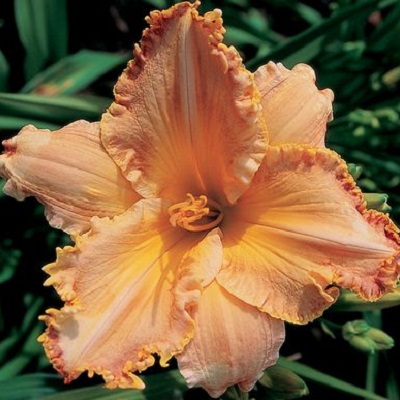Lily Bulb Cultural Instructions
(Asiatic, Double Asiatic, Orienpet, Oriental, Tiger, Trumpet, Turkish Cap Lilies)
SOIL AND LOCATION
Lilies require a well-drained soil. Compost, peat moss or other organic materials can be worked into heavy soils to improve drainage. Another solution to poor drainage is planting on a gently slope, in raised beds, or on hills. Do not plant in low wet spots. Plant in groupings of three or more for a good show and added support for the tall stems.

SUN OR SHADE
Lilies prefer sunlight. Although full sun until mid-afternoon is optimal, lilies will perform quite acceptably with filtered sunlight or partial shade. Lilies in shade will tend to reach for the sun and may require staking for support. Avoid planting near walks or walls that reflect the hot afternoon sun.
PLANTING DEPTH
Cover the nose of the bulb with 3 to 5 inches of soil. This allows for good stem rooting and protects against winter cold. Plant pointed end up.
MULCH AND GROUND COVERS
Lilies like cool roots. Planting with shallow rooted ground covers or among other perennials helps shade the soil and looks nice. Lilies are extremely hardy, but in the coldest areas a mulch of straw or pine needles provides added insurance against winter injury. Mulches also keep the soil moist and cool in summer.
CUTTING FLOWERS
Leave at least 8″ to 12″ of the stem and foliage to provide for bulb growth and next year’s flowers. Not cutting the stems at all gives maximum bulb growth, but provided a portion of the stem remains and is kept green and healthy, lilies will come back year after year even if used for cut flowers.
FERTILIZERS
A handful of bone meal mixed in the soil at planting gives the bulbs a good start. Lilies benefit from a feeding in the early spring and prior to their active growth. Use a balanced mix such as 10-10-10, or a plant food developed for bulbs. Avoid heavy feeding with high nitrogen fertilizers as it makes them susceptible to disease and can cause the foliage to burn. Do not use manures!
INSECTS AND DISEASE
Aphids and fungus can be controlled with the same sprays used for roses should they become a problem. Good growing practices and site location will prevent most disease and insect problems. New growth should also be protected from deer and rabbits, which are particularly attracted to the Oriental Lilies.
ON ARRIVAL
Lilies are dormant at the time of shipment. Plant them right away. Bulbs can be stored in the refrigerator or other cool place (34 to 40 degrees F) until planting. Unlike other bulbs, lilies are never completely dormant and should be planted as soon as possible after receipt. Sprouting should occur in just a few weeks and glorious flowers within months.
